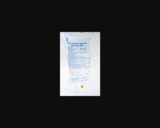
Photo showing 0.9% Sodium Chloride in 250 ml bag
- Subject:
- Career and Technical Education
- Health Science
- Material Type:
- Diagram/Illustration
- Author:
- Deanna Hoyord
- Date Added:
- 04/14/2021

Photo showing 0.9% Sodium Chloride in 250 ml bag
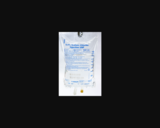
Photo showing 0.9% Sodium Chloride in 500 mL bag
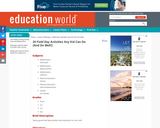
Twenty great elementary level field day activities/ideas that emphasize fun and team building over skill.

30 Second PSA is designed to be a way to assess students on what was learned during their time in Health Class. Students must put together a 30 second public service announcement about a topic covered in class and may work with another student to do so. Topics are chosen by having a class discussion about what was covered over the course of the quarter/semester/etc. Students can use any means they choose to demonstrate their knowledge (video, presentation, rap/poetry, skit, etc.) but it needs to be sussinct and to the point.
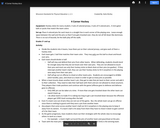
Lesson activity will provide learning activity for a lead-up hockey skill (Striking, long implement). Offensive and defensive strategy, teamwork and sportsmanship are also an important aspect of the lesson.

Students will learn about the 5 Languages of Love and the definitions of all of them. They will then "guess" which one is their primary language. After "guessing" they will take a self-assessment and find out what their primary love language is. We will then discuss what they can do with this information.

www.homeschoolshares.com offers a great free downloadable link to ABC exercise cards.
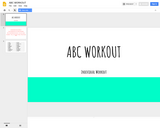
Alphabet Workout
We used first and last names. Every letter is an activity. You could spell answers to review questions, random questions, or vocab words. Possibilities are endless! Work individually or as a group. Make it fit for your curriculum and environment.
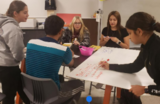
A semester long project with 4 weeks of book study, additional research and a final presentation.

150 low- and high-fidelity simulations and serious games scenarios created for Nursing, Respiratory Therapy, EMT-Paramedic, Medical Assistant and Pharmacy Technician programs. Nursing scenarios are aligned with WTCS Statewide Nursing Curriculum. Simulation documents can be used as standalone scenarios or as augmented reality scenarios using the free, open source iOS "ARIS" app on iPads.
This work by the Wisconsin Technical College System TAACCCT IV Consortium is licensed under a Creative
Commons Attribution 4.0 International license.
Third party marks and brands are the property of their respective holders. Please respect the copyright and terms of use on any webpage links that may be included in this document.
This workforce product was funded by a grant awarded by the U.S. Department of Labor’s Employment and Training Administration. The product was created by the grantee and does not necessarily reflect the official position of the U.S. Department of Labor. The U.S. Department of Labor makes no guarantees, warranties, or assurances of any kind, express or implied, with respect to such information, including any information on linked sites and including, but not limited to, accuracy of the information or its completeness, timeliness, usefulness, adequacy, continued availability, or ownership. This is an equal opportunity program. Assistive technologies are available upon request and include Voice/TTY (771 or 800-947-6644).
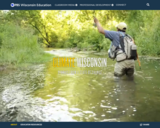
Climate Wisconsin is an educational multimedia collection featuring stories about the impact of climate change in Wisconsin.
LEARNING GOALS:
Expand understanding of how climate change impacts life in Wisconsin.
Connect personal observations to the study of climate and environmental science.
Identify actions that may impact changes to our climate.
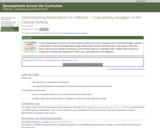
Spreadsheets across the Curriculum Module. Students build a spreadsheet to calculate proper medicine dosages using the metric system.

Social determinants of learning (SDOL) impact students’ abilities to successfully complete their courses. An economic barrier for vulnerable students is the skyrocketing cost of textbooks. An innovative strategy to promote equity in educational delivery is the adoption of open educational resources (OER). The Open Resources for Nursing (Open RN) project published five OER textbooks with input from over 65 contributors and 300 reviewers. Open RN textbooks have received widespread national and international usage. Analysis of student outcomes indicates similar successful course completion rates by all students in OER course sections and increased rates of successful course completion by non-White students.
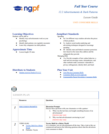
Students will be able to:
-Identify ways advertisements work on your psychology
-Identify dark patterns you regularly encounter
-Learn why companies use dark patterns
Lesson length: 85 mins
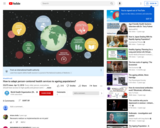
This source is a short youtube video designed to show students the effects of an aging population on the healthcare system, and how if the healthcare system runs poorly, this older population will fall behind in terms of their health and wellness. I'd like for the students to watch the video in its entirety and then share their thoughts on why the aging population presents a problem for health providers, and then 1 thing the health care system can do to improve patient care for people aged 65 and older. The key takeaways I'd like the students to understand is that our population is growing older year by year, and this creates a unique set of challenges for our healthcare system.
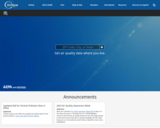
AirNow is your one-stop source for air quality data. Our recently redesigned site highlights air quality in your local area first, while still providing air quality information at state, national, and world views. A new interactive map even lets you zoom out to get the big picture or drill down to see data for a single air quality monitor.
AirNow reports air quality using the official U.S. Air Quality Index (AQI), a color-coded index designed to communicate whether air quality is healthy or unhealthy for you. When you know the AQI in your area, you can take steps to protect your health.
AirNow is a partnership of the U.S. Environmental Protection Agency, National Oceanic and Atmospheric Administration (NOAA), National Park Service, NASA, Centers for Disease Control, and tribal, state, and local air quality agencies. Complete list of AirNow partners. Agencies all over the country send their monitoring data to AirNow for display. The Department of State provides data from U.S. Embassies and Consulates to inform personnel and citizens overseas, and the U.S. Forest Service and NOAA provide fire and smoke data.
AirNow’s centralized data system provides quality control, national reporting consistency, and the ability to distribute data to the public, researchers, businesses, educators, and to other data systems. In AirNow, you’ll find:
Current and forecast air quality maps and data for more than 500 cities across the U.S.
Current and historical data for U.S. Embassies and Consulates around the world
Current fire conditions including fire locations, smoke plumes, and air quality data from permanent and temporary air quality monitors
Air quality data for Canada and Mexico
Enviroflash emails, apps, widgets, and an API
Health and air quality information for
the public
healthcare professionals
teachers and students
weathercasters
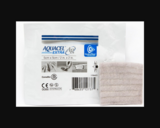
Photo showing alginate dressing and packaging
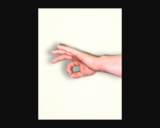
Photo showing a hand with thumb and index finger touching
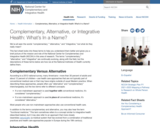
This website by the National Center for Complementary and Integrative Health teaches students about alternative health practices. The website breaks down alternative health practices into 4 broad categories - nutritional, psychological, physical, and other. Then, it provides specific examples of alternative health practices in each category. By clicking on the specific example, the website redirects you to a page that defines and describes that practice in more detail. This website is great because it provides diagrams; charts; embedded links to additional information; general alternative health practices; and alternative health practices specific to groups like military personnel, cancer patients, and cancer survivors. As an interactive activity, students can separate into small groups. Each member can research a specific alternative health practice like massage therapy, acupuncture, or meditation. After a brief time window like 10-15 minutes, the students can share their findings with the group in the form of a Prezi, Google Slides, or speech. The goal of this activity is for students to become familiar with alternative health practices, be able to list and discuss specific practices, and possibly use some of these practices in their lives.

Anatomy Arcade makes basic human anatomy come alive by using activities that allow for interactive learning by students. The site includes interactive games involving the following body systems: skeletal, articular, muscular, circulatory, respiratory, nervous, digestive, endocrine, and general anatomy. The activities included are crossword puzzles, matching, word searches, study videos, and integrated biology videos.